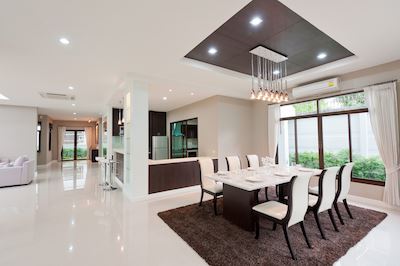The lighting world is buzzing with LED – everybody wants them. LEDs – or light emitting diodes – are electronic lights. There are several different types of LED lights, and you’ll find they serve in different kinds of devices with varying levels of function.
Miniature LEDs are the most common. You’ll find these in a lot of the devices you use every day. Miniature LEDs are used as indicator lights in things like smart phones and tablets. 
High-powered LEDs – HPLED – produce a much brighter and more powerful light source. Because of the chance of overheating, they have to be used and mounted with heat-absorbent materials. HPLEDs are quickly replacing fluorescent and incandescent lights because they are more energy efficient. They cost a bit more than their older counterparts, but their longer life makes up for it.
Super-flux LEDs are designed for maximum light emission. You’ll find them in large panels, such as in street signs and billboard advertising.
While LED is changing the way we look at lighting, as a homeowner, there are a few things you should know. LEDs come in all shapes and sizes. They are designed to replace every lighting need within your home, inside and out.
When you buy LED, you don’t look for the right wattage to meet your needs. Instead, look for brightness, light appearance, and color rendering.
Brightness
With old incandescent bulbs, wattage was synonymous with how bright the bulb would be. That’s not true for LED. You’ll find LEDs sold by lumens, which provides you with a measure of brightness and how much light a particular product will emit. If your lamp uses 60 watts, for example, it emits approximately 800 lumens.
Light Appearance
Most of us have adjusted to the light an incandescent bulb creates. That’s the number one complaint when someone first switches to LED. LEDs are sold with correlated color temperature (CCT) measured in kelvin (K). Warmer lights will have lower kelvin, while cool, blue light will have higher numbers. The old incandescent bulbs usually have a temperature rating of around 3000K. If you select a higher rated LED, the cool, blue light will shine through, and give you a different approach to a light source.
Color Rendering
Sunlight provides energy. And light was originally created to emulate sunlight in our dark spaces.
But not every room should be lit the same way. For example, if a bulb emits blue light waves, it produces serotonin, which helps keep you focused, alert, and awake. If you add a bulb that doesn’t produce blue light waves, your brain produces melatonin, which sleep research has shown helps you relax and get a good night sleep. Which light is better for your bedroom?
LEDs are powerful because they offer you a wide array of light potential, and give you choices with how you light each room. You can even select LEDs that change with the time of day, your preferences for ambiance, or even based on mood.
Isn’t this the year you make the change to LED throughout your home?

